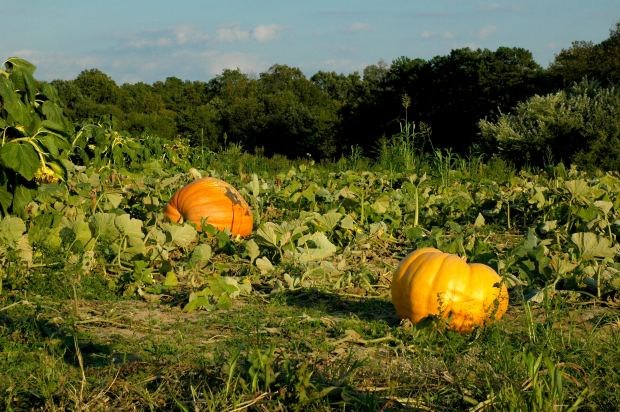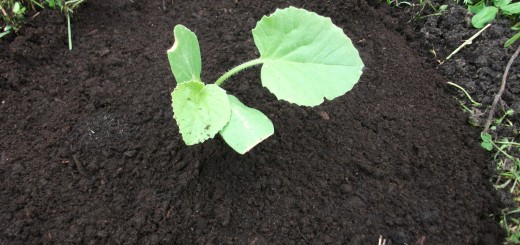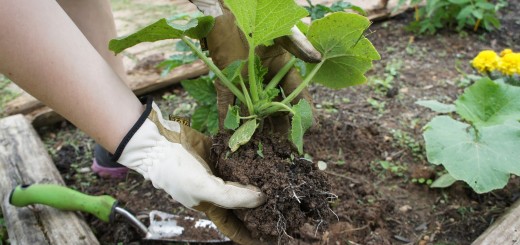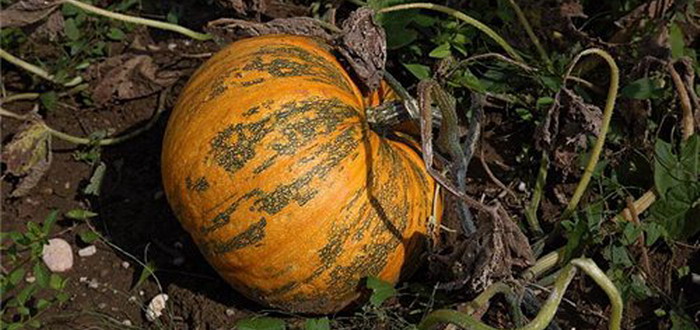Planting and caring for pumpkin outdoors
Content
Seeds or seedlings?
There are two ways to grow a beautiful pumpkin - sowing directly into open ground or planting seedlings. Everyone chooses the method that best suits their climatic conditions and personal preferences.
Seeds
Different types of pumpkin seeds differ, but regardless of the variety, our primary task is to select large seeds for planting from smaller ones. Sowing the same type of seeds, the seedlings are quite uniform.
- germination test: To do this, you need to select several seeds of each variety and put on a moistened napkin. If after a while sprouts appear, the seeds can be safely planted;
- warming up will help improve the quality of seedlings, as well as increase the number of fruitful flowers, which is especially important for this crop. It is necessary to put the seeds on a baking sheet in a layer of 2 cm and heat them in the oven for about 4 hours at a temperature of +50 - + 55 ° C. In this case, you need to gradually increase the temperature, and the seeds should be stirred several times;
- disinfection will protect the plant from the development of certain diseases, protect it from pests and provide additional care. To do this, you need to put the grains in a solution of liquid fertilizers for 24 hours;
- hardening increases the protective properties of the seeds. First, they need to be soaked in water with a temperature of about + 20 ° C. When the zucchini seeds swell, they are transferred to the refrigerator and kept there for 3 to 10 days at zero temperature. At the same time, constantly make sure that the zucchini does not germinate.
Seedling
In late April or early May, you can plant seedlings. The best option for growing zucchini seedlings is clay pots about 15 cm in diameter. They are only half filled with soil. The most suitable temperature: + 25– + 30 ° C during the day, + 18– + 20 ° C at night. In case of insufficient lighting, the marrow plantings are additionally illuminated with fluorescent lamps.
Very soon, the first shoots appear, which at first stretch strongly upward, forming a long stem. After 10-12 days, the growth rate will decline. During this period, it is necessary to ring the seedlings - add earth to the container and very carefully twist the stem with a corkscrew. Only cotyledon leaves should look out of the ground.
Seedlings require additional care - during the period of formation of high-quality sprouts, they are fed twice with fertilizers. Each plant needs about 0.3 l of a solution consisting of potassium salt (15 g), superphosphate (20 g), ammonium nitrate (15 g), mullein (0.8-1 l). Be sure to make sure that the plants do not touch each other, constantly push the containers apart. Zucchini are ready for planting on the ground after 3-5 true leaves appear (25-30 days after sowing).
Video "How to grow a pumpkin"
Soil preparation
To grow pumpkins, you need to choose well-lit areas that warm up well (preferably the south side). For zucchini, medium and light loamy neutral, sandy loam soils, well filled with organic matter, are ideal.
After harvesting the previous crops, the soil should be dug to a depth of about 30 cm, and also applied approximately 7 kg per 1 m2 manure or rotted compost. If the soil is poor, in addition to the specified fertilizers, ash (two glasses) and superphosphate (50 g) must be added to each well. All fertilizers must mix well with the soil.
Growing
The process of growing this beautiful crop depends on the method of planting - seedlings or seeds in the ground. Transplanting. In early June, marrow seedlings are planted in the garden. The distance between the plants is 1.5 m, and between the rows - 2 m. Immediately before planting the plants, each hole should be well watered. A deepening should be made around the zucchini and watered, then mulched with peat or dry humus.
Young shoots must be protected from possible frost, so they are covered with foil, wooden boxes, paper or plastic bottle caps. Pumpkin seeds are planted in mid-May, when the soil is warmed up to + 13 ° C. Seeds are planted at a depth of about 6 cm in medium loamy soil; 8-10 cm in lighter soil.
The preparation of the holes is no different from the preparation for the seedling method. You can speed up the germination of zucchini in the open field by covering the crops with foil. After the emergence of shoots, it is removed. When two true leaves are formed on the seedlings, the plantings must be thinned out - only 1–2 of the largest plants remain.
How to care for a pumpkin
In order for zucchini to grow well and give a decent harvest, you need good care. In particular, weekly feeding of plants - organic and mineral fertilizers should be alternated. The irrigation regime is also extremely important - it should be watered with warm water (+ 18– + 25 ° С). The pumpkin tolerates drought quite well, so you shouldn't flood it, especially during the flowering period. You need to water it at the root, trying not to hurt the leaves.
In zucchini, the leaves grow much faster than the fruits themselves. Therefore, as it grows, special care should be taken - carefully remove the leaves that cover the fruit. If the summer is cool, you need to help form high-quality fruits - cut off excess shoots (the optimal amount is 3 pieces), and pinch the central stem, leaving from 3 to 5 ovaries, 15-17 cm each. To get larger zucchini, you should leave only 1-3 ovaries ...
Also, do not forget about hilling and weeding the pumpkin beds after watering or rain. It is possible to loosen the beds with plantings until the plants close into solid rows. Harvesting takes place after the first frost. Ripe zucchini is considered after hardening of the skin - the bark is not pressed through by the nail. You need to store the resulting crop in a dry place at a low temperature - from +4 to +8 ° C. Today, there are already varieties that are well preserved at home under relatively high temperature conditions.
Video "Planting seedlings in open ground"
In the video, you will learn how to properly plant pumpkin seedlings in open ground. The video contains the most useful tips and tricks.




